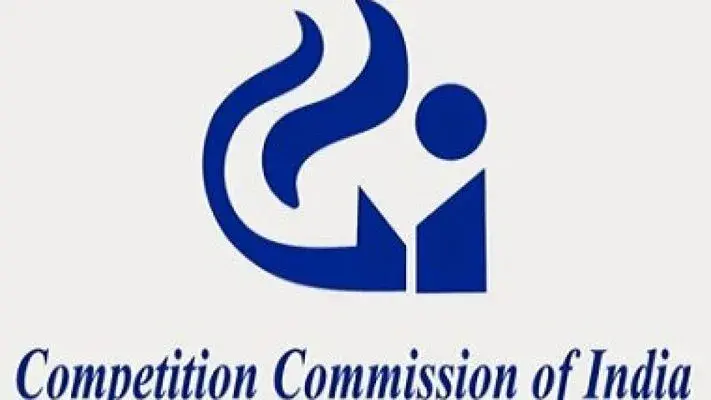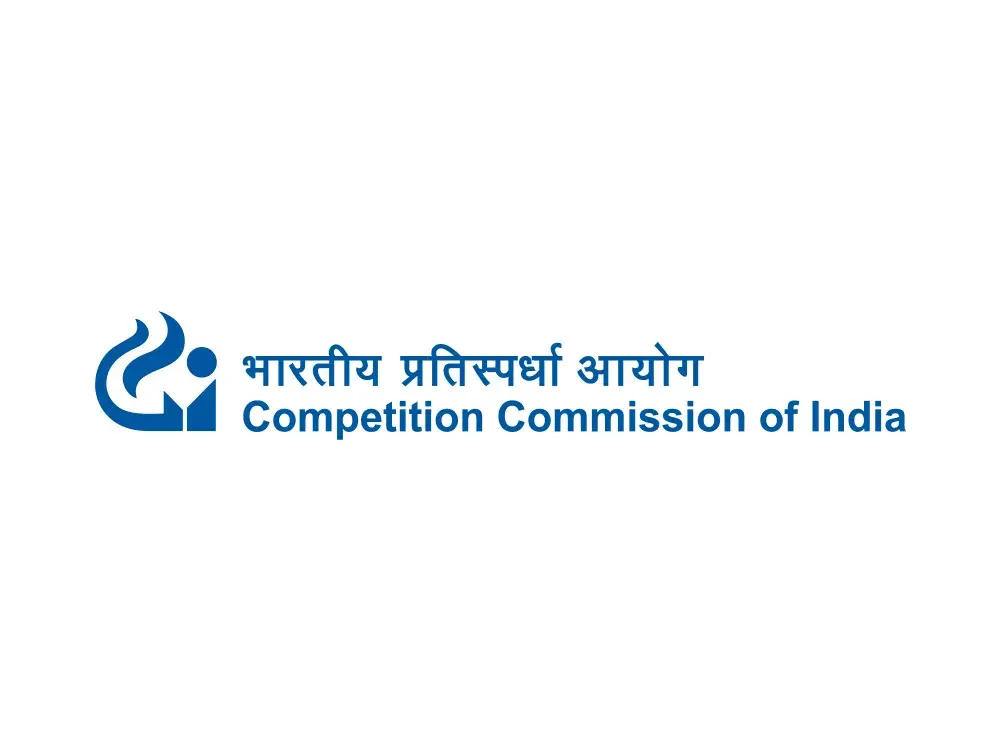WhatsApp bans accounts of 7.4 million Indian Users

By Anuradha Gandhi and Rachita Thakur
Introduction
The famous free messaging application, WhatsApp, has its feet grappled with controversies since a long time now. One of such instance dates back to 2019 wherein WhatsApp was criticized for its role in upto 30 mob lynches that were said to be triggered by rumours spreading on the App. In response, WhatsApp released a White Paper titled, “Stopping Abuse” stating that it has deleted 2 million accounts per month as part of an effort to blunt the use of the world’s most popular messaging app to spread of fake news.[1]

Source: Stopping Abuse: How WhatsApp Fights Bulk Messaging and Automated Behaviour
The Monthly Compliance Reports- Statistics
The Meta owned social media platform, WhatsApp, in its crackdown of reported accounts, banned over 7.4 million Indian users from the platform. WhatsApp in its latest monthly report in consonance with the Information Technology (Intermediary Guidelines and Digital Media Ethics Code) 2021, revealed the actions taken in response to grievances from Indian users , account violations in India and orders from Grievance Appellate Committee, encompassing user complaints and regulatory compliance. [2]
WhatsApp received 14, 767 complaints in India in August and took remedial action on 71 of the reports which included banning an account or restoring the previously banned account.
3.4 million accounts were proactively banned before user reports from amongst 7.4 million accounts during the period August 1-31, 2023. This was taken as a preemptive action to enforce platform rules and policies by identifying accounts that potentially violate rules. This can be said to be a measure to ensure safety and integrity of the platform without relying on the user reported violations.
What does WhatsApp do to ensure safety and security on the platform?
WhatsApp, on its website, details how it deals with the abuse and spam, stating that it considers user complaints and takes proactive measures to prevent harmful behavior on the platform.
In order to detect the prohibited and/or harmful and/or abusive contents, WhatsApp operates at three key stages in an account’s lifecycle, that is:
- Registration– The accounts have to pass through this common checkpoint wherein the platform sends in temporary code via SMS or a phone call. The users have to enter the code to verify their accounts with the platform. WhatsApp bans accounts that send high volume of messages, coordinated campaigns that often try to spread their activity across many different accounts;
- Messaging– The accounts that complete registration, the platform monitors user behaviour and intensity of activity or forwarding of content. For instance, an account that is registered 5 minutes before attempting to send 100 messages in 15 seconds is more likely to be engaged in abuse and thus, such accounts are immediately banned from the platform. WhatsApp further makes use of systems that detect various factors to shut abuse;
- Response to negative feedback that is receives from user reports and blocks – Accounts are banned on receipt on user reports and blocks. Whenever a user receives a message from an unknown number, such a user then is provided with options that enable them to “report” or “block” the sender’s account.
Users need to be vigilant too!
As reported, WhatsApp’s automated tracking systems that identifies unusual and complex cases thereby help countering abusive behavior on the platform and end-to-end encrypted messaging services to combat abuse. While the platform blocks the harmful accounts, the platform also urges the users to be vigilant and notify the platform about any unauthorized use or security breach of any kind that the users might experience or know about.[3]
What are the Prohibited Activities?
The Terms of Use of WhatsApp prohibit usage which:
- Violates, misappropriates, or infringes the rights of WhatsApp, our users or others including privacy or intellectual property or other proprietary rights;
- Is illegal, obscene, defamatory, threatening, intimidating, harassing, hateful, or racially offensive;
- Involves publishing falsehood or misrepresentations;
- Involves sending illegal or impermissible communications such as bulk messaging, auto-messaging, auto-dialing and the
- Or involves any non-personal use of services other authorized by WhatsApp
As per the FAQs on WhatsApp’s official website, an account activity violates the Terms of Service if it involves a spam, scams or if it puts WhatsApp users’ safety at risk.
WhatsApp – A Significant Social Media Intermediary
The sizable Significant Social Media Intermediaries include WhatsApp, YouTube, Facebook, Instagram, Twitter, etc. therefore, these intermediaries are encumbered with additional due diligence which is required to be observed along with the standard due diligence that all intermediaries are bound by. [4]
Thus, WhatsApp’s decision to ban accounts comes in compliance with the IT Rules. This is not the first time that the social media intermediary has taken such an action. More than 2.9 million accounts in India were banned the month of January, 2023 and 3.6 million in December, 2022. [5]
The Information Technology (Intermediary Guidelines and Digital Media Ethics Code, 2021
The Information Technology (Intermediary Guidelines and Digital Media Ethics Code, 2021 (hereinafter referred to as the “IT Rules”) enlists compliances for social media intermediaries to observe due diligence, deploy automated technology based measures, including automated tools or other mechanisms to proactively identify information that depicts abuse.
The IT Rules, under Rules 4A, provides for additional due diligence that must be observed by significant social media intermediaries which includes:
- Appoint a Chief Compliance Officer who shall be responsible for ensuring compliance with the IT Act and IT Rules
- Appointing a nodal contact person for 24×7 coordination with law enforcement agencies and officers to ensure compliance to their orders;
- Appointing a Resident Grievance Officer;
- Publishing a periodic report every month mentioning the details of complaints received and action taken thereon and the number specific communication links or parts of information that the intermediary has removed or disabled access to in pursuance of any proactive monitoring conducted by using automated tools.
A significant social media intermediary is a social media intermediary having a number of registered users in India above such threshold as notified by the Central Government. [6] As per the notification dated February 25, 2021, the Ministry of Electronics and Information Technology has specified fifty five lakh as a threshold for a social media intermediary to be a significant social media intermediary.[7]
Rule 7 of the IT Rules further state that in case of non-compliance by an intermediary with the IT Rules, such an intermediary then shall be subjected to criminal liability.
WhatsApp in loop with previous legal challenges
Complying with the provisions now, WhatsApp in the case titled, WhatsApp LLC v. Union of India,[8] once challenged the enforcement of the IT Rules citing them to be ‘unconstitutional’ and violative of right to privacy. WhatsApp had moved to the Delhi High Court challenging the ‘traceability’ clause, that is, Rule 4(2) of the IT Rules that requires the intermediaries to enable identification of the first originator. It was pleaded that tracing the originator would led to breaking of end-to-end encryption and puts its benefits at risk.
It must be further noted that in response the Ministry of Electronics and Information Technology released a press note dated May 26, 2021 stating that the government has no intention to violate the right of privacy of WhatsApp users. The requirement to identify originator of information is only required for Prevention, Investigation or Punishment of very serious offences that relate to sovereignty and integrity of India.[9]
[1] https://www.internetlab.org.br/wp-content/uploads/2019/10/WA_StoppingAbuse_Whitepaper_020618-Final-1.pdf
[2] https://www.indiatoday.in/technology/news/story/whatsapp-bans-over-74-lakh-indian-accounts-in-august-here-is-how-you-can-spot-and-report-online-scams-2443587-2023-10-03
[3] WhatsApp’s Privacy Policy
[4] https://www.mondaq.com/india/social-media/1075986/the-social-media-furore#:~:text=The%20Rules%20also%20go%20on,%2C%20Facebook%2C%20Instagram%20and%20Twitter.
[5] https://economictimes.indiatimes.com/tech/technology/whatsapp-banned-2-9-million-accounts-in-india-in-january/articleshow/98341138.cms?from=mdr
[6] Rule 2(v) of the Information Technology (Intermediary Guidelines and Digital Media Ethics) Code, 2021
[7] https://www.meity.gov.in/writereaddata/files/Gazette%20Significant%20social%20media%20threshold.pdf
[8] Writ Petition (2021)
[9] https://www.scconline.com/blog/wp-content/uploads/2021/05/Press-Note-on-WhatsApp-HC-Case.pdf
Date Of Implementation Of Legal Metrology (packaged Commodities) (amendment) Rules, 2022 Extended To January 01, 2024

By Rupin Chopra and Shantam Sharma
INTRODUCTION
The Ministry of Consumer Affairs, Food and Public Distribution, has on 30th September, 2023 issued a notification under the Department of Consumer Affairs, introducing amendments to the Legal Metrology (Packaged Commodities) Rules, 20111. This objective of the amendment is to ensure informed consumer experience through more accurate measurement and labeling of packaged goods in India and is called “Legal Metrology (Packaged Commodities) (Amendment )Rules, 2023.”
BACKGROUND
The Ministry of Consumer Affairs, Food and Public Distribution vide its notification dated March 28, 2022 had notified the Legal Metrology (Packaged Commodities) (Amendment) Rules, 2022 as per which the following amendments were introduced and were to come in force from October 1, 2023-
1) Packaged grouped together for retail sales must comply with each mandatory declarations.
2) The unit price is to be declared on package along with the MRP in Indian Rupees.
3) Format prescribing the manner in which Unit price is to be declared on every package.
As per the amended rules, the following amendments were to be effective-
1) The unit sale price in rupees, rounded off to the nearest two decimal place, shall be declared on every pre-packaged commodities as follows:
i) per gram where net quantity is less than one kilogram and per kilogram where net quantity is more than one kilogram;
ii) per centimeter where net length is less than one metre and per metre where net length is more than one metre;
iii) per mililitre where net volume is less than one litre and per litre where net volume is more than one litre;
iv) per number or unit if any item is sold by number or unit:
Provided that for packages containing alcoholic beverages or spirituous liquor, the State Excise Laws and the rules made thereunder shall be applicable within the State in which it is manufactured.
Provided further that declaration of unit sale price is not required for the pre-packaged commodities in which retail sale price is equal to the unit sale price.
2) The Second Schedule which specifies the quantities of commodities by weight, measure or number has been omitted.
3) No prosecution will be initiated against the manufacturer or packer or importer of pre-packaged commodities for making declaration with effect from January 01, 2024 in accordance with Legal Metrology (Packaged Commodities)(Amendment) Rules, 2023.
CURRENT SCENARIO
The Ministry of Consumer Affairs, Food and Public Distribution, now, vide its notification dated 30th September, 2023 has notified the Legal Metrology (Packaged Commodities) (Amendment) Rules, 2023.
It further amends Rule 1, sub-rule (2), for the figures, letter and words- 1st day of October, 2023 and substitutes the same with 1st day of January, 2024.
The aforementioned thus implies that the amendments as prescribed in the Legal Metrology (Packaged Commodities) (Amendment) Rules, 2023 shall be effective from 1st January, 2024
1 Available at: https://consumeraffairs.nic.in/sites/default/files/uploads/legal-metrology-acts-rules/Amendment%20of%20PCR%20ext%20till%2031.12.2023.pdf
CCI Approves Merger of Tata SIA Airlines into Air India

By Rupin Chopra and Shantam Sharma
Introduction
In a significant development for the Indian aviation industry, the Competition Commission of India (CCI), vide its order1 dated September 1, 2023, has given its green light to the merger of Tata SIA Airlines into Air India. Though a detailed order by the honourable commission is still awaited, this momentous decision also includes the acquisition of certain shareholdings by Singapore Airlines (SIA) in Air India, subject to the compliance of voluntary commitments offered by the parties involved. This transformative merger is set to reshape the landscape of Indian aviation and potentially position Air India as the nation’s leading international carrier and second-largest domestic airline, trailing only behind IndiGo.
The Merger of Tata SIA Airlines Limited into Air India Limited
2
The merger involves the consolidation of Tata SIA Airlines Limited, popularly known as Vistara, into Air India Limited, with Air India emerging as the surviving entity. Additionally, Singapore Airlines Limited and Tata Sons Private Limited will acquire shares in the merged entity, further solidifying their commitment to the Indian aviation market. Singapore Airlines, the parent company of the SIA Group, has been actively involved in the Indian aviation sector for several years.
As part of the merger transaction, Singapore Airlines (SIA) will invest a substantial Rs 2,059 crore in Air India’s expanded share capital, securing a 25.1 percent shareholding in the merged entity. This strategic investment solidifies SIA’s commitment to the Indian aviation market, enhancing its presence and influence in this dynamic sector. Aviation research and advisory firm CAPA India sees this merger as a game-changer, predicting that Air India will evolve into a global network carrier within the next six years. With a projected 50 percent market share in international air traffic, Air India is poised to make significant strides in connecting India with the world. But on the flip side it will reduce the Indian aviation market into a duopoly, dominated by the Air India Group and IndiGo.
A Strategic Move by Tata Group
The Tata Group’s re-entry into the airline market in 2013 marked a significant turning point for the Indian aviation industry. Vistara, a joint venture between Tata Sons Private Limited and Singapore Airlines Limited, took flight in 2015, offering travelers a premium flying experience. This endeavor was followed by the acquisition of Air India and Air India Express by the Tata Group in January of the previous year, thereby creating a more comprehensive portfolio of airlines under their banner.
The consolidation of Vistara and Air India is poised to catapult Air India into the position of India’s leading domestic and international carrier. With a combined fleet of 218 aircraft, this merger will make Air India the largest international carrier in India and the second-largest domestic carrier, trailing closely behind IndiGo.
Merging for Success
The merger of Vistara and Air India has been a long-anticipated move that promises to usher in a new era of aviation in India. With the CCI’s approval now in place, the two airlines will commence the process of aligning their schedules, networks, and reservation systems. This consolidation is expected to enhance operational efficiency and customer service in the Indian aviation market. This merger not only strengthens the Tata Group’s presence in the Indian aviation sector but also offers Singapore Airlines a strategic stake in a substantially larger entity. It is expected to enhance SIA’s market presence in India, aligning with their multi-hub strategy and active involvement in the growing Indian aviation market.
Concerns of a Duopoly
While the approval of the merger between Tata SIA Airlines and Air India has generated excitement and optimism within the Indian aviation industry, it has also raised concerns and garnered criticism, primarily revolving around the potential consolidation of power in the hands of a few dominant players. Though the CCI did not find any adverse effect on competition3 in the relevant geographic as well as product market , still the significant criticisms centres on the fear that this merger could lead to India’s aviation market4 becoming a duopoly, with the Air India Group and IndiGo holding the lion’s share of the industry leading to:
- A Diminishing Competitive Landscape
As the merger unfolds, there are growing apprehensions about the reduced diversity in the Indian aviation market. According to data from the Directorate General of Civil Aviation (DGCA) for July5, Vistara currently holds an 8.4 percent market share, while Air India has a market share of 9.9 percent. When combined, these two entities could potentially capture over 30 percent of the Indian aviation market, making them a formidable player in the industry. However, they still trail behind the market leader, IndiGo, which commands a substantial 63 percent market share.
With the Air India Group and IndiGo already holding substantial market shares, the merger could tip the scales further, leaving fewer choices for travelers and potentially leading to higher fares due to reduced competition. A duopoly scenario often results in a lack of incentive for airlines to innovate, improve services, or offer competitive pricing.
- Market Control on Key Routes6
The concern over market dominance extends to specific routes, particularly those considered high-traffic and lucrative. For instance, on the Delhi-Mumbai route, the combined Air India group is poised to control 49 percent of total flights, leaving IndiGo with a smaller share at 31 percent. A similar scenario is anticipated on the Delhi-Bengaluru route, one of the country’s busiest, with the combined Air India group projected to hold a commanding 52 percent share of total flights, while IndiGo retains 35 percent. Such control over critical routes could further exacerbate the lack of competition in these key travel corridors.
- Impact on Consumer Choice
A duopoly in the aviation industry can translate to limited options for passengers, both in terms of routes and fares. With fewer airlines to choose from, travellers may find themselves with less flexibility and fewer alternatives when planning their journeys. This limitation on consumer choice can result in higher prices and a decreased focus on service quality, as airlines may not feel the same competitive pressure to cater to passengers’ needs.
Voluntary Commitments to Ensure Fair Competition7
To address concerns related to market power and potential negative impacts on competition, Air India has offered voluntary commitments as part of the merger approval process. These commitments include divestiture of slots on certain routes with overlapping services, ensuring that capacity remains unaffected on India-Singapore and specific domestic routes, and a pledge to add flights rather than reducing them. These commitments are a testament to the parties’ dedication to fostering fair competition and providing travellers with more choices and better services.
Conclusion
The CCI’s approval of the merger of Tata SIA Airlines into Air India, coupled with Singapore Airlines’ strategic investment, marks a turning point in the Indian aviation industry. This merger not only strengthens the Tata Group’s aviation portfolio but also promises enhanced competition and improved services for travellers. As the aviation landscape transforms, it is essential to strike a balance between fostering growth and maintaining a competitive landscape. It is incumbent upon regulatory bodies, industry stakeholders, and the merged entities themselves to ensure that competition remains vibrant, fares remain affordable, and travellers continue to enjoy a diverse range of choices. The Indian aviation sector’s future success hinges on its ability to navigate these challenges and create a sustainable, consumer-friendly environment.
1 Available at: https://pib.gov.in/PressReleaseIframePage.aspx?PRID=1954178
2 Available at: https://www.livemint.com/companies/news/vistaraair-india-merger-gets-cci-approval-check-shareholding-other-details-11693577104184.html
3 3. Anti-competitive agreements. – (1) No enterprise or association of enterprises or person or association of persons shall enter into any agreement in respect of production, supply, distribution, storage, acquisition or control of goods or provision of services, which causes or is likely to cause an appreciable adverse effect on competition within India.
4 (r) “relevant market” means the market which may be determined by the Commission with reference to the relevant product market or the relevant geographic market or with reference to both the markets;
(s) “relevant geographic market” means a market comprising the area in which the conditions of competition for supply of goods or provision of services or demand of goods or services are distinctly homogeneous and can be distinguished from the conditions prevailing in the neighbouring areas;
[(t) “relevant product market” means a market comprising of all those products or services –
(i) which are regarded as inter-changeable or substitutable by the consumer, by reason of characteristics of the products or services, their prices and intended use; or
(ii) the production or supply of, which are regarded as interchangeable or substitutable by the supplier, by reason of the ease of switching production between such products and services and marketing them in the short term without incurring significant additional costs or risks in response to small and permanent changes in relative prices;]
5 Available at: https://www.thehindu.com/business/Industry/domestic-air-passenger-traffic-jumps-25-in-july/article67193981.ece
6 Available at: https://economictimes.indiatimes.com/industry/transportation/airlines-/-aviation/cci-approves-merger-of-vistara-into-air-india/articleshow/103289621.cms?from=mdr
7 Available at: https://www.fortuneindia.com/enterprise/cci-gives-green-signal-for-air-india-vistara-merger/113942
Related Posts
Zee-Sony Merger: A Journey through Challenges and Triumphs
“Green Channel” Clearance for Mergers & Acquisitions (M&A) by CCI
Mediation Act, 2023: Alleviate Dispute, Mediate!

By Nihit Nagpal and Akif Abidi
“The obligation of the legal profession is… to serve as healers of human conflict… we should provide mechanism that can produce an acceptable result in shortest possible time, with the least possible expense and with a minimum of stress to the participants. This is what justice is all about.”
– Warren Burger
The aforementioned quotation is cited from the judgment of K.M. Joseph, J. in Patil Automation Pvt Ltd vs Rakheja Engineers1
The Alternate Dispute Resolution mechanisms in India have been gaining greater significance since the enactment of the Commercial Court Act, 2015. The recent enactment of the Mediation Act, 2023 marks a landmark event in developing the jurisprudence of mediation by codifying the procedure of appointment of mediators, ensuring timely resolution of the disputes, detailing which disputes are exempted from mediation.
The present Mediation Act, 2023 is an outcome of the detailed report submitted by Parliamentary Standing Committee on Personnel, Public Grievances, Law, and Justice, led by Shri Sushil Kumar Modi to Rajya Sabha Chairman. Subsequently, it was passed by the Rajya Sabha and the Lok Sabha respectively.
The scope and object of the Mediation Act, 2023 is to align the process of Mediation as per the International standards and aligned to the observations in various judgments of the Hon’ble Supreme Court.
It broadly attempts to generate greater awareness for mediation process, institutionalize mediation, appointment of mediators, and enforcement of the settlement between the parties. The object is to make the process of mediation more accessible through online mediation, and making the process overall cost effective.
Salient Features of Mediation Act, 2023
1. Applicability of the Act: Wherein all/both parties habitually reside/incorporated in/have place of business in India or if provided in any mediation agreement or in case of international mediation or wherein one of the parties is central government or its agency/public body/corporations and the subject matter is commercial in nature or any other dispute as notified by the Central government.
2. Exempted from the applicability of the Act: Certain disputes provided under the First Schedule of the Act such as prosecutions of criminal nature, direct/indirect taxation related, inquiry, investigation or proceeding under Competition Act, 2002; proceedings before TRAI, TDSAT, SEBI, SAT, National Green Tribunal and any other subject matter of dispute which may be notified by the Central Government.
3. Online Mediation: As per Section 30 of the Act, online mediation including pre-litigation mediation may be conducted at any stage of mediation with the written consent of the parties including by the use of electronic form or computer networks but not limited to an encrypted electronic mail service, secure chat rooms or conferencing by video or audio mode or both.
4. Pre-Litigation Mediation: The Act under Section 5 provides that irrespective of any mediation agreement existing between the parties, or not, the parties before filing any suit or proceedings of civil or commercial nature in any court, may voluntarily and with mutual consent take steps to settle the disputes by pre-litigation mediation
5. Timely resolution: The Act under Section 18 provides for the conclusion of the Mediation within a period of one hundred and twenty days from the date fixed for the first appearance before the mediator with an additional extension of 60 days based on the agreement of both the parties.
6. Mediation Agreement and Registration: The Act provides that the mediation agreement may be a separate agreement or a clause, but it must be written.
7. Grounds of challenge to settlement: In certain cases where fraud, deception or impersonation is involved or wherein the matter referred was unfit for mediation.
8. Establishment of the Mediation Council of India: The Central Government under Section 31 shall establish MCI at Delhi for the purposes of supervision and accreditation of the mediators, and mediation institutes.
The Mediation Act, 2023 purposefully ideates the visionary statement of former Chief Justice of India, N.V Ramanna, “Justice does not always require black gowns and elaborate arguments, the future belongs to mediation.”
The passage of the Mediation Act, 2023 is a landmark legislation mandating the institutionalized form of mediation and incorporation of online mediation. However, the voluntary nature of pre-litigation mechanism may dilute the impact of this Act. Further, establishment of Mediation Council of India is a positive way ahead but the effective working of the same can be assessed only at the later stage.
Despite the concerns, this Act has the true potential to making mediation, a more accessible and cost-effective option, which will further help in reducing the huge burden on our Courts.
1 (2022) 10 Supreme Court Cases 1
Related Posts
Nestle Maggi vs. Wai Wai : Mediation for settling Trademark Disputes
Mediation and Conciliation process initiated for contested matters in TMR, Delhi
Delhi Government toughens measures to deal with sexual harassment

By Anuradha Gandhi and Isha Sharma
It has been recently brought to light in a report by The Times of India on September 26, 2023 that multiple departments and organisations within the Delhi government have recently initiated the establishment of the Internal Complaints Committee (ICC) to handle issues faced by women employees at workplaces, as said by a Senior Delhi Government Officer. These actions came in response to directives from Ms. Atishi, the Hon’ble Minister of Women and Child Development (WCD.
Despite the POSH Act of 2013 mandating the formation of an ICC in every office or branch employing 10 or more individuals, it was reported by the sources that such committees were lacking in most Delhi government departments.

Source: https://wcd.delhi.gov.in/The catalyst for these recent efforts was the arrest of a senior official within the Women and Child Development department, Premoday Khakha, [1]who stands accused of repeatedly raping and impregnating a minor. Shockingly, he escaped despite of earlier complaints of sexual harassment made against him by several female colleagues. All such complaints went unanswered and unnoticed, thereby, compelling the govt. to issue fresh directives to all departments.
“I am ashamed of this behaviour on our part.. I am both alarmed and disappointed by the department’s inability to identify and take action against this repeated pattern of harassment by an employee of the WCD. When multiple complaints come up against the same employee, surely it needs to ring alarm bells in our mind and a deeper investigation should be warranted,” the minister said.
The “exceptionally disturbing incident” is a “wakeup call for us,” Atishi said, while asking the Hon’ble Chief Secretary to draft comprehensive processes and rules for strengthening the redressal mechanisms across departments to avoid such incidents in the future. Alongside, it was said that a system will soon be developed to flag cases when an official of all departments have been accused of sexual harassment and intimidation “repeatedly”.
In response to these instructions, several departments have acted swiftly. For instance, the Office of the Registrar of Cooperative Societies has recently constituted a five-member departmental committee, headed by an assistant registrar, for the purpose of redressing complaints of female employees, as said by a senior official requesting anonymity. This committee aims to encourage women employees to come forward with any sexual harassment grievances, and regular meetings will be convened under the presiding officer’s guidance.
“We are suitably promoting the formation of the committee among employees in our office. Women employees in our office can come forward with complaints of sexual harassment, if any. Periodic meeting will be convened by the presiding officer,” the official said.
Moreover, there are reports of other departments also “re-constituting” similar committees. Atishi has been actively involved in enhancing the effectiveness and responsiveness of ICCs across various departments. The need to strengthen ICCs is imperative, as it was revealed that the women and child development departments’ committee had previously dismissed complaints of sexual harassment citing reasons such as “casual remarks (were) made by officers and staff” and “lack of clarity with regard to administrative matters”.
Atishi futher emphasizes that ICCs should have the authority to question even senior officials, underlining the importance of their composition. These efforts aim to create a safer and more equitable working environment for all employees in Delhi’s government offices.
Related Posts
Calcutta High Court grants interim relief to School Secretary under POSH Act
Chapter on women in New National Policy for Persons with Disabilities

By Anuradha Gandhi and Rachita Thakur
Introduction
The Department of Empowerment of Persons with Disabilities, (DEPwD) Ministry of Social Justice and Empowerment had put up the draft National Policy for Persons with Disabilities (hereinafter referred to as the “Draft Policy”) for public scrutiny in June 2021 inviting comments from the public.1
The enactment of the Rights of Persons with Disabilities Act, 2016 was in line with the signing of the United Nations Convention on the Rights of Person with Disabilities (UNCRPD) by India in October 2017 and adoption of New Education Policy 2020. Accordingly a committee of experts was constituted to review the existing National Policy for the Persons with Disabilities, 2006 and to suggest a new National Policy.
The Committee then formulated a Task Force under the Joint Secretary, DEPwD to draft a New National Policy for Persons with Disabilities for consideration. The Draft Policy has been recommended by the Task Force on October 12, 2021 and upon deliberations by the Committee was put up for public comments on July 09, 2023.
The Draft National Policy on Persons with Disabilities
The Draft Policy contain provisions for education, health facilities, employment and access to sports facilities, among other things.
The Draft Policy attempts to identify the principal areas of intervention that include early-identification, rehabilitation, human resource development, education, employment, barrier-free environment, social protection, research, sports, recreation and cultural activities.
To achieve the purpose, that is, to state the clear commitment of the Government to empowerment and inclusion of persons with disabilities and provide a mechanism for creating an environment for their participation in the society, the Draft Policy is based on the following key principles:2
a. Recognizes that persons with disabilities are valuable human resource
b. Recognizes that the persons with disabilities are entitled to all rights and freedom equally with others.
c. Recognizes also that the discrimination on the ground of disability is violation of inherent dignity.
d. Recognizes further the diversity of persons with disabilities.
e. Recognizes the need to promote and protect the human rights across all categories of persons with disabilities including those requiring high support.
f. Recognizes that women and girls with disabilities are at greater risk and are prone to violence, abuse and exploitation.
g. Recognizes that children with disabilities should have the freedom on equal basis at par with children without disability
h. Emphasizes the need to provide a gender perspective thrust to promote inclusion and empowerment of persons with disabilities.
i. Recognizes the greater role of Government in ensuring, promoting and upholding the rights of persons with disabilities and in 16 promoting the inclusion of disability dimensions in the development agenda in line with SDGs 2030.
The Draft Policy, based on the foundation of inclusive growth proposes for developing a network of Cross Disability Early Intervention Centres in every district to provide the services in accessible and appealing environment under a single roof. The Draft Policy further proposes to set up a national level employment portal for persons with disabilities.
The New chapter dedicated to Women
While the Draft Policy has been finalized by the Department, it is also reported that a separate chapter is being planned to be added on women with disabilities to ensure that they get adequate attention. The decision to add a chapter dedicated to women comes as a post-response decision from several suggestions received from various stakeholders.3
The New Policy on Persons with Disabilities will replace the existing policy that was notified in 2006 in accordance with the Persona with Disabilities (Equal Opportunities, Protection of Rights and Full Participation) Act, 1995. However, the Act of 1995 has been replaced by the Persons with Disabilities Act, of 2016 which recognizes 21 disabilities in total and 14 more than the Act of 1995.
2 https://disabilityaffairs.gov.in/upload/uploadfiles/files/Draft%20Copy%20New%20National%20Policy%20May%202022%20.pdf
3 https://theprint.in/india/draft-policy-on-disability-to-have-dedicated-chapter-on-women-provision-for-early-detection-centres/1764641/
Related Posts
Women at (Gig) Work: Redressal in case of sexual harassment?





